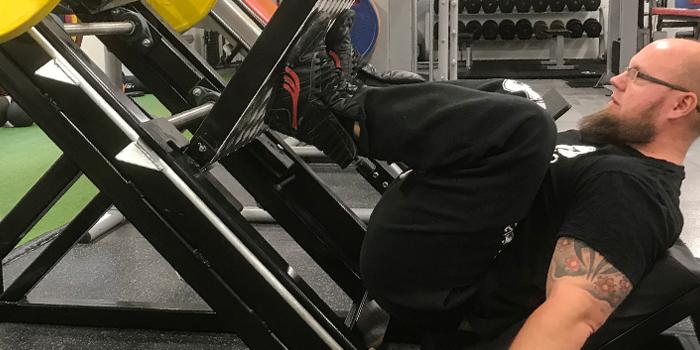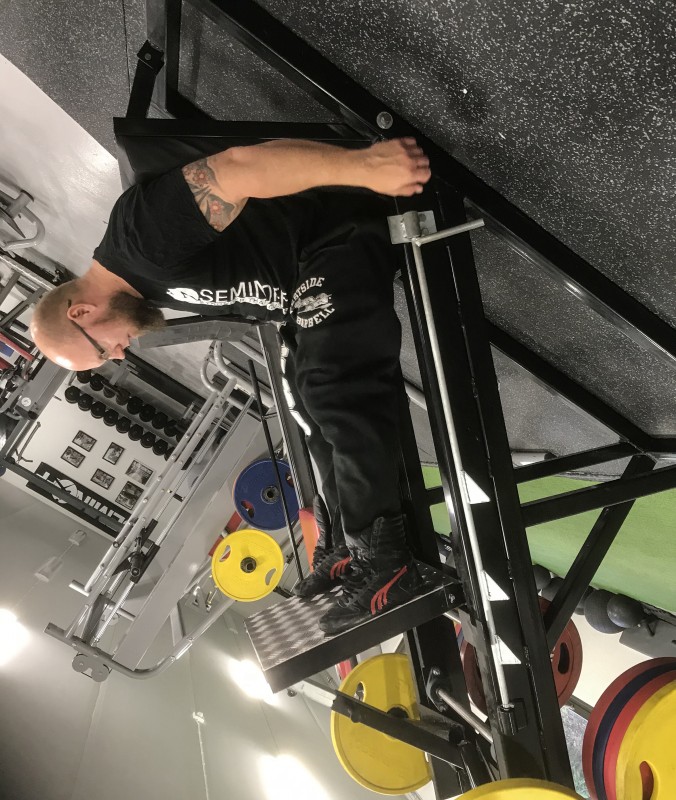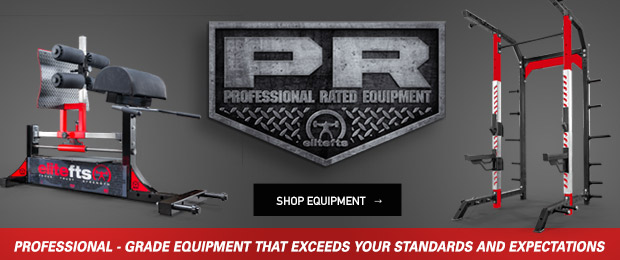
Since you read my articles at elitefts, I assume you want to become bigger, stronger and faster. Many people believe that the leg press is one of the keys to build more muscles to succeed with my statement above. But the truth is you can really fuck yourself up just by relying on the leg press! This is why!
In a regular squat, you use the same movement pattern as you do when you’re getting up from a chair. The box squat is actually the perfect example of this. You move your hip back to sit down and push it forward to get upright again. In the leg press, on the other hand, you’re only pushing your legs and don’t use the specific posterior chain.
RECENT: Alternate Your Heavy Squats with Belt Squats
In the picture below, you can see how a leg press would look if you flip it to look as if you were standing on your feet when performing it. You’re teaching your body to push your ass up first, just like many poor squatters do, which leads to a compensating movement pattern that puts a very high load on your lumbar spine. This would be reason enough to skip the leg press, but if this wasn’t reason enough, you also round your pelvis if you go deep enough in the simulated squat. If you don’t do that, you barely break parallel in your knees.
Sure, you can build bigger quads in the leg press, but that is the only benefit I can see of doing it. We also have one of those machines in my gym, which I used to recommend people to not use if it isn’t a specific need they have due to their sport, rehab, or other things.
Why is the hip movement so essential? Because it’s the most fundamental momentum that sets your body in movement — either running, lifting big weights, or just standing up from a chair.
I had an older client with multiple decreases last week. She told me she couldn’t stand up from a chair without pushing her hands in her knee or reaching for something to drag herself up with. In one session of doing box squats, her body allowed her to stand up with her hands on her back. The week after, she did 20 squats easily. She hadn’t got stronger in that time, but her body realized what it needed to do to allow her to stand up.
We could have done leg extensions and leg presses for years without making that progress. Sure, this was an old lady in poor health. Sometimes you need to look at that category to see what cannot be seen with a younger, healthier category. What works for one person usually works for another person as well; there are just different grades of the skills they are able to perform.
If you want to train your legs in a machine instead of squatting with a bar, I think belt squats are the best alternative, or the hack lift. Many people look at the hack lift in the same way as they do to the leg press. But there is a huge difference! In the hack lift, you keep your upper body upright all the time, like you are doing a squat and you never tilt your pelvis unless you are using the wrong foot stance.
It’s important to teach the body to carry up the weights on the ankles, knees, and hips together. I will share another example of a client I had with knee joint problems. He had an unusual affliction that his knees were unstable and could flip the wrong way if he hadn’t focus on it. He had surgery to get more stable and be able to train the muscles. In the beginning, he came to me to get stronger around his knees to avoid an injury. He was asking for leg extensions and perhaps leg presses to get more muscle tissue around his knee.
But I was thinking, ‘If we get the tissue around his knee stronger alone when he puts pressure on his legs, it’s normal for his knee to carry up the most of the external pressure. If we instead teach his body to distribute the pressure divided on his ankles, knees, and hips — we get less pressure on each joint.’
READ MORE: The Mind-Body Link: Posture Yourself Into a Winning Position
He has gone from being unstable on a flat surface to squatting with 130kg (286 pounds) with a free barbell, and this summer, he went to Germany on a bicycle vacation and did 360 kilometers in one week. His doctor is surprised about the progress he made!
So, what does this have to do with the leg press? Well, I’m pretty sure that this progress would have been impossible with the training that was suggested by the other physio as I described above.
And the interesting thing is that if it works this way for him, why should it be different for the rest of us? It’s not enough to get stronger in the muscles alone; we have to get stronger in our moving complexes. We don’t just need to get more stable joints; we need to learn how to distribute the pressure over them together to get stronger in our totals and to avoid injuries!












What are your thoughts on box squats above parallel ( due to hip issue) vs. a leg press for maintenance of lower extremity strength in a 61 year old who really likes squats?
Best wishes, Stefan